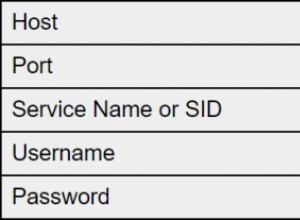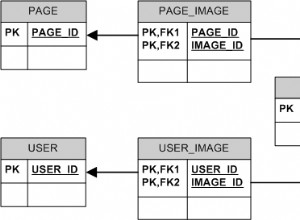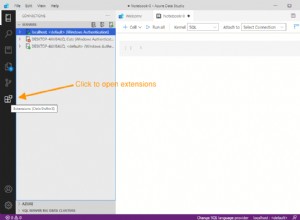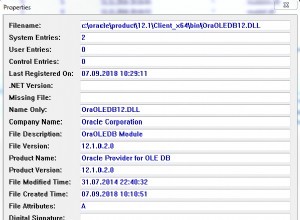Komunikaty informacyjne (o ważności mniejszej niż 10) i dane wyjściowe PRINT są zwracane do klienta i zgłaszane jako InfoMessage zdarzenia przez SqlConnection instancja. Każde zdarzenie zawiera kolekcję SqlError obiekty (jest to ta sama klasa używana w SqlException.Errors ).
Oto kompletny przykład pokazujący zmiany stanu połączenia, komunikaty informacyjne i wyjątki. Zauważ, że używam ExecuteReader zamiast ExecuteNonQuery , ale informacje i wyniki wyjątków są takie same.
namespace Test
{
using System;
using System.Data;
using System.Data.SqlClient;
public class Program
{
public static int Main(string[] args)
{
if (args.Length != 2)
{
Usage();
return 1;
}
var conn = args[0];
var sqlText = args[1];
ShowSqlErrorsAndInfo(conn, sqlText);
return 0;
}
private static void Usage()
{
Console.WriteLine("Usage: sqlServerConnectionString sqlCommand");
Console.WriteLine("");
Console.WriteLine(" example: \"Data Source=.;Integrated Security=true\" \"DBCC CHECKDB\"");
}
public static void ShowSqlErrorsAndInfo(string connectionString, string query)
{
using (SqlConnection connection = new SqlConnection(connectionString))
{
connection.StateChange += OnStateChange;
connection.InfoMessage += OnInfoMessage;
SqlCommand command = new SqlCommand(query, connection);
try
{
command.Connection.Open();
Console.WriteLine("Command execution starting.");
SqlDataReader dr = command.ExecuteReader();
if (dr.HasRows)
{
Console.WriteLine("Rows returned.");
while (dr.Read())
{
for (int idx = 0; idx < dr.FieldCount; idx++)
{
Console.Write("{0} ", dr[idx].ToString());
}
Console.WriteLine();
}
}
Console.WriteLine("Command execution complete.");
}
catch (SqlException ex)
{
DisplaySqlErrors(ex);
}
finally
{
command.Connection.Close();
}
}
}
private static void DisplaySqlErrors(SqlException exception)
{
foreach (SqlError err in exception.Errors)
{
Console.WriteLine("ERROR: {0}", err.Message);
}
}
private static void OnInfoMessage(object sender, SqlInfoMessageEventArgs e)
{
foreach (SqlError info in e.Errors)
{
Console.WriteLine("INFO: {0}", info.Message);
}
}
private static void OnStateChange(object sender, StateChangeEventArgs e)
{
Console.WriteLine("Connection state changed: {0} => {1}", e.OriginalState, e.CurrentState);
}
}
}




